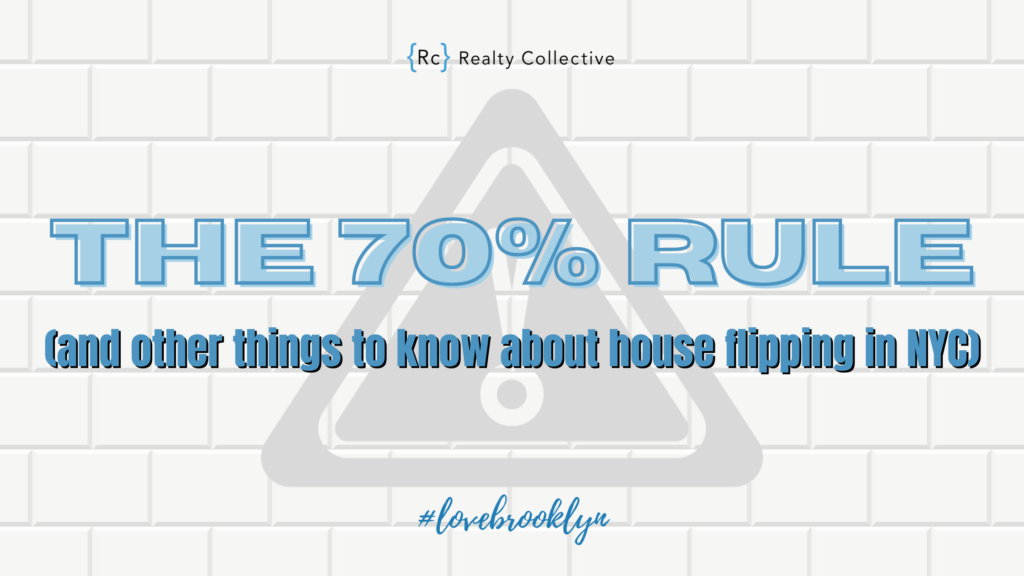The 70% rule (and other things to know about house flipping in NYC)
Oct 30, 2023

Flipping houses in one of the world’s most expensive cities has the potential for a big financial windfall — if done correctly and market conditions support it — but we don’t need to tell you there are also big, scary risks. And if you’re thinking about taking one of those, it’s a good idea to prepare yourself by not only understanding the economics of flipping in general, but what the process looks like in New York.
What is house flipping?
House flipping involves purchasing a property, renovating it, and selling it for a profit. In New York City, successful home flippers often buy properties at a significant discount, often 30% to 70% below the market value. This can include distressed, off-market, or inherited properties.
Despite the potential for profit, there are both pros and cons to consider when flipping houses here. On the positive side, there are great profit margins, with successful flippers often making more than a 25% profit on their flips. Flipping houses also allows you to convert sweat equity into real equity, as you learn about real estate and add value to the property through renovations. Additionally, flipping can be done part-time, allowing you to work on the project during evenings and weekends.
However, there are also potential downsides to flipping houses. One major risk is that your flip could turn into a money pit if you fail to thoroughly inspect the property before purchasing it. Major issues such as structural problems, water damage, mold, electrical or plumbing issues, and HVAC problems can be costly to fix. Additionally, labor costs for repairs beyond your skill set can add up, especially for jobs like electrical, plumbing, roofing, and structural work. It’s also important to consider that your money will be tied up in the property, and the longer you hold the flip, the more expensive it becomes due to property taxes, utilities, maintenance, and HOA fees (if applicable). If you have financed your flip, the additional interest payments can also impact profitability.
To successfully flip houses in New York City, here are some tips to keep in mind:
Location is everything here
Look for properties in desirable neighborhoods close to amenities like the subway, grocery stores, playgrounds, hospitals, and schools. It’s also beneficial to choose a property that is easily accessible for oversight during the renovation process.
Hire a home inspector to thoroughly inspect the property before purchasing
This will help identify any major or minor issues that could impact the cost of repairs and the overall profitability of the flip.
Stick to the 70% rule
When purchasing a home to flip, avoid paying more than 70% of the property’s After Repair Value (ARV), excluding rehab costs. Here’s an important formula to keep in mind:
70% Rule Formula: Your Purchase Price = After Repair Value x 0.70 – Rehab Costs
Secure funding for your flip
If you don’t have your own funds, consider options like hard money lenders, private investors, or small business lenders. Mortgage brokers in New York can help you identify the right lender for your needs.
Purchase a house with real potential for profit
Avoid cheap houses in undesirable locations and focus on properties in desirable neighborhoods that will maximize your flipping profits.
Ensure high-quality repairs by obtaining the necessary permits for any additions or major repairs Pay attention to both the fundamentals of the property and its aesthetic appeal, as curb appeal can greatly impact buyer interest.
Flipping houses in New York City can be a rewarding venture if approached with careful planning, thorough inspections, and strategic decision-making. By following these tips, you can increase your chances of success in the competitive New York City real estate market.












